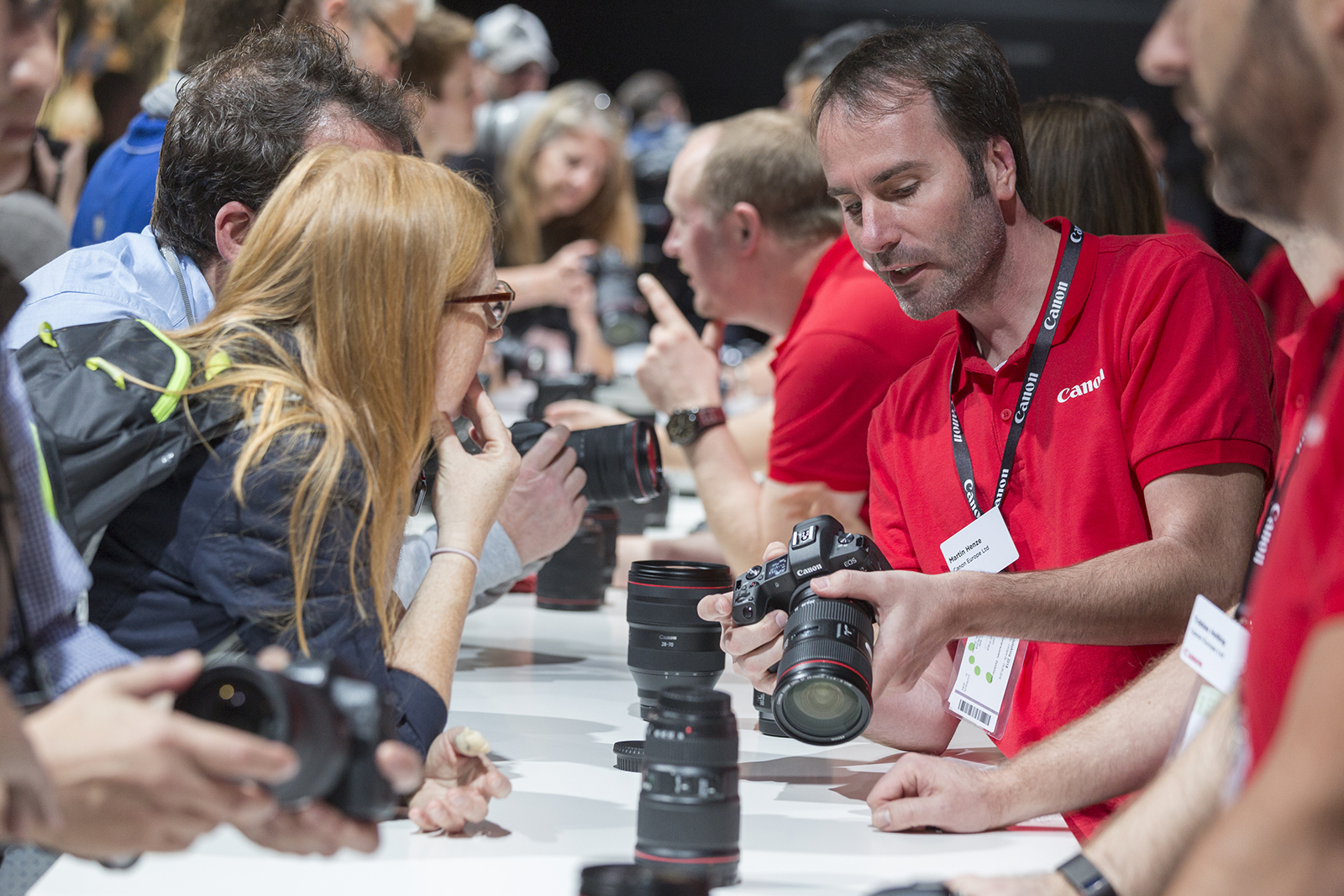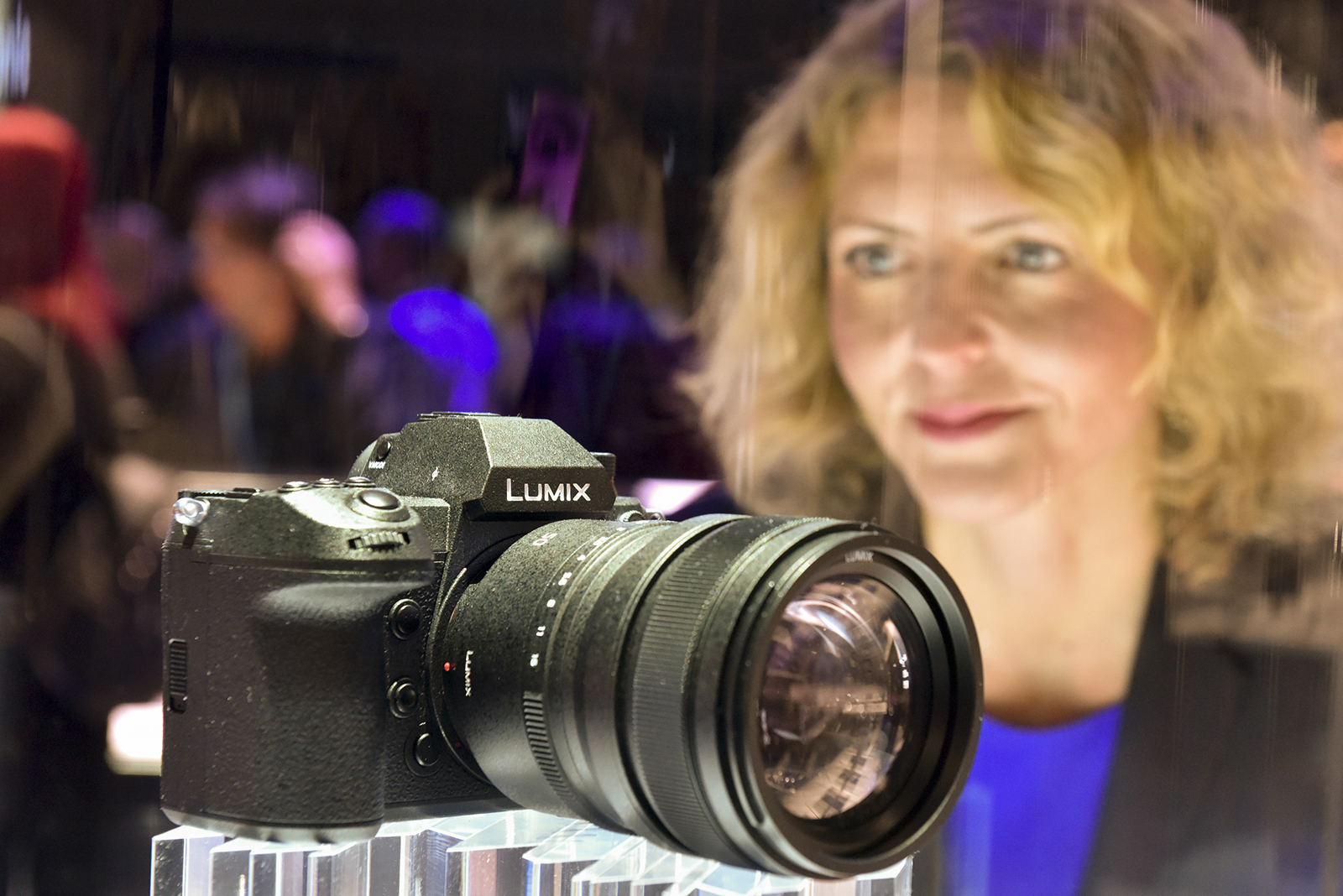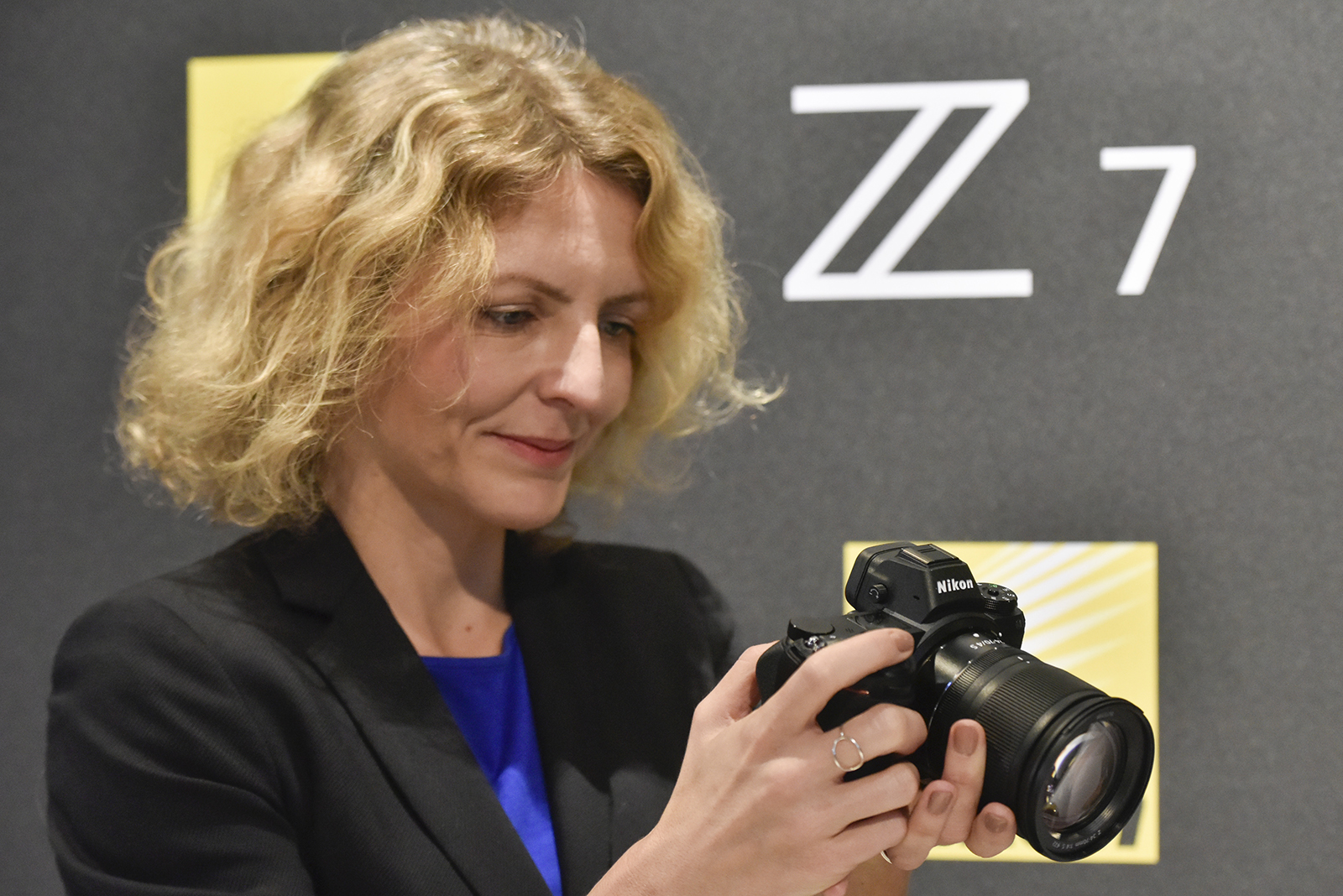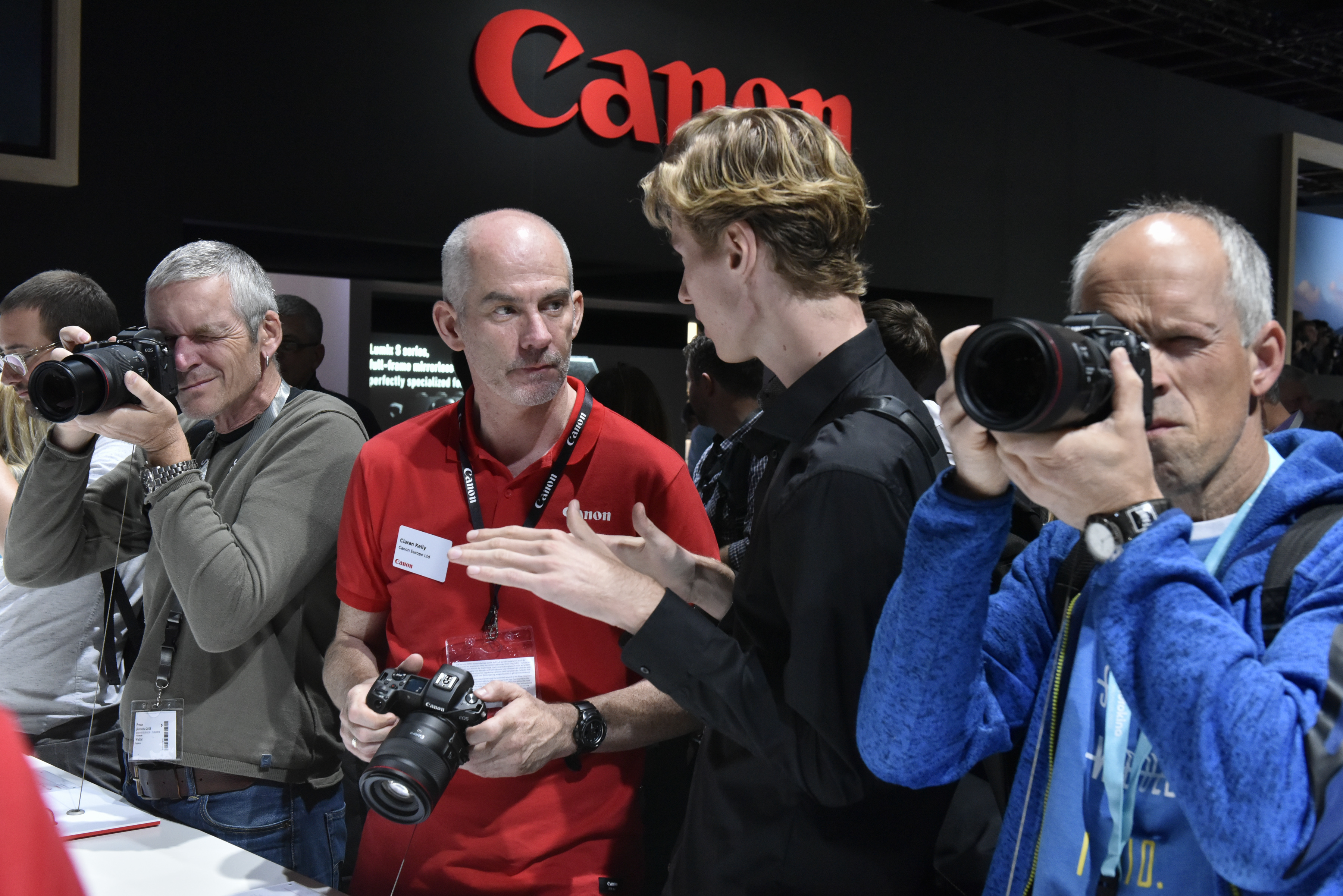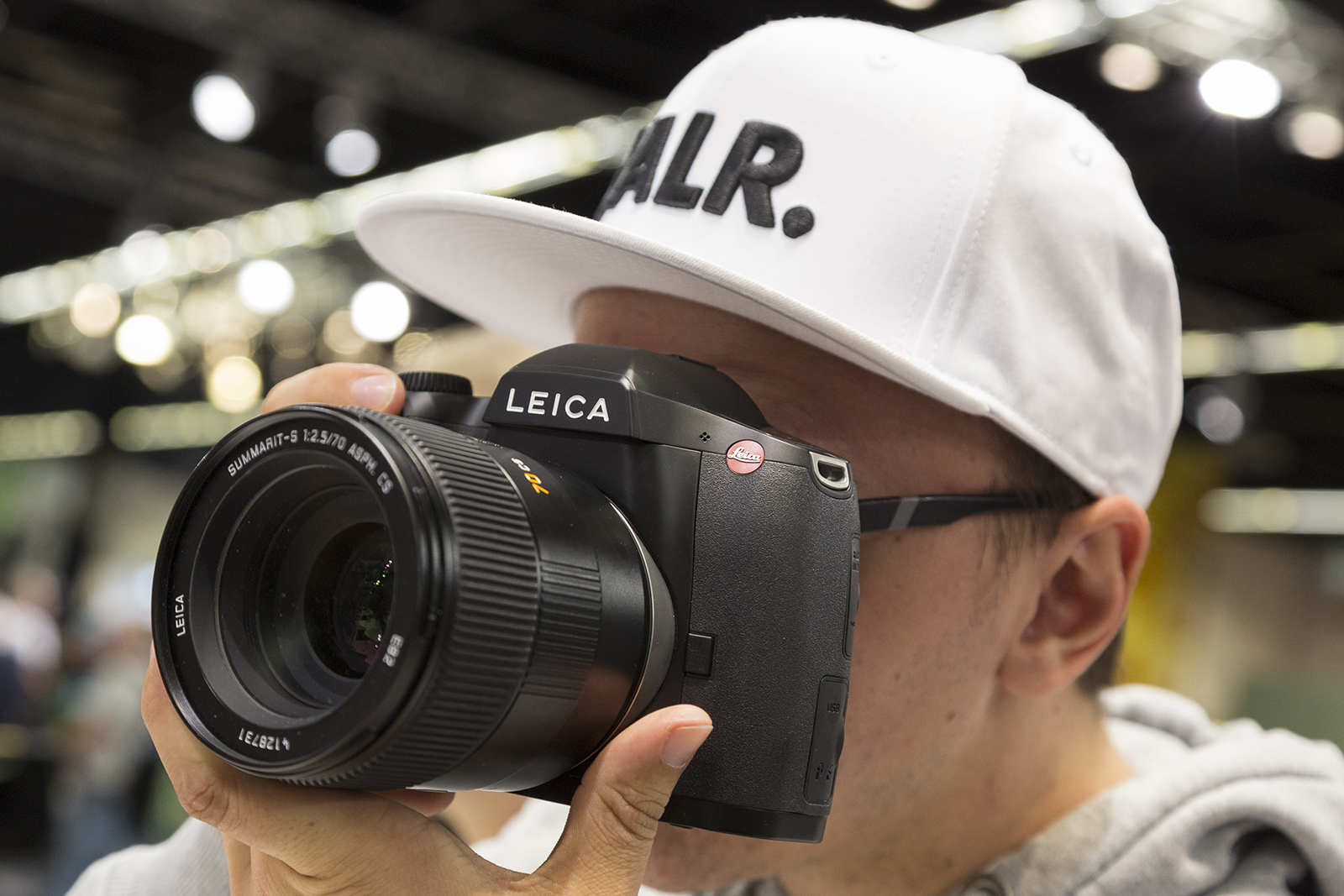In less than two months, the full-frame mirrorless camera options have jumped from two to five major brands adopting larger sensors inside smaller bodies. Photographers at the start of the year had only Sony’s line-up or Leica’s luxury option, but during Photokina 2018, the world’s largest photography trade show of the year, Nikon, Canon, and Panasonic all had new full-frame mirrorless cameras on display too. And if Photokina is any indication, including full-frame surprises from Zeiss and Zenit, 2018 is the year of the full-frame.
Nikon and Canon avoided the Photokina noise, and unveiled full-frame mirrorless cameras at the end of August and the start of September, respectively. While the major DSLR brands were long rumored to be developing competitors to Sony’s a7 lineup, Photokina brought another, less expected player to the game. Panasonic, a major player in Micro Four Thirds cameras, unveiled the full frame S1R and S1 mirrorless cameras.
The Panasonic S1R and S1 bring a handful of unique specs to the table, including 60 fps 4K. Stabilization inside the camera body also works in conjunction with stabilized lenses, and, unlike the Nikon and Canon, the Panasonic bodies have dual media slots.

But perhaps even more intriguing, the S1R and S1 already have compatible lenses ahead of the 2019 release, thanks to a partnership with Leica and Sigma using the Leica L-Mount. The partnership will allow photographers to mix and match lenses and bodies from the three brands.
In an interview, Sigma suggested that the company will also develop a new full-frame mirrorless. Sigma’s, however, will use a Faveon design which can create better color reproduction. The interview also suggests that Sigma’s own SA mount will be retired in favor of the L-Mount.
Besides bringing more choices for photographers, the sudden explosion in full-frame mirrorless brings along with it more competitive prices. Industry analyst Scott Peterson with Gap Intelligence says that the average price of a full-frame camera fell by 18 percent between 2016 and 2017 , but has already fallen by 40 percent in 2018 on launch prices alone. Part of that major price difference is created from more entry-level options like the Canon EOS R, Nikon Z6, Panasonic S1 and Sony a7 III (introduced in February) pitted against fewer new high-end models, the Nikon Z7 and the Panasonic S1R.
“The megapixel race has run, and sensor size is being deployed as the next differentiator to entice consumers,” Peterson said. “Just as ‘more is better,’ ‘larger is better’ is an easy message for consumers to understand. It shows brands listening to their audiences and actively attempting to counter hesitation around smaller sensor models. With this increased involvement, pricing erosion for full-frame cameras will continue, and is picking up momentum as the format shifts from niche to mainstream.”
Mirrorless wasn’t the only category seeing full-frame sensors. Optics company Zeiss launched its first full-frame camera, the ZX1, with a fixed 35mm lens. But the most intriguing part isn’t that Zeiss designed the sensor to perfectly calibrate with the lens, but the Adobe Lightroom that is built into the camera. The ZX1’s larger touchscreen and software allows photographers to edit on the same device with which they shot without resorting to the smaller sensors inside smartphone cameras.
Zenit also came back from a more than 10-year hiatus from cameras with the Zenit M, a full-frame digital rangefinder camera based on the company’s historic models. Full details aren’t yet available, but the company did share that the camera will be equipped with an f/1 lens.

The growth of full-frame mirrorless has many photographers questioning the future of the Micro Four Thirds format, which turns 10 years old this year. But both Panasonic and Olympus both suggested the category isn’t going anywhere. Olympus held a rather quiet Photokina without any new camera announcements, but the company’s display of current mirrorless cameras emphasized the portability that comes with the smaller format.
“Our philosophy is to focus on the personal mobility and spontaneity of our customers with products that are compact and lightweight but technologically advanced in order to produce great image quality. Therefore, Olympus will continue to introduce unique mirrorless cameras that offer performance that surpasses single-lens-reflex cameras,” Shigemi Sugimoto, the head of Olympus’ imaging division said. He added that size, as well as stabilization, sets the line apart.
While the major Micro Four Thirds players say the format isn’t going anywhere, the lowering cost of full-frame could potentially push the smaller format down in cost as well. While the new Panasonic full-frame cameras don’t yet have a price listed, the average cost of a new full-frame camera in 2018 is $2,338, according to Gap Intelligence data. While Micro Four Thirds may still have a place for portability, the $1,700 price of high-end models like GH5 and OMD E-M1 Mark II may need to drop to give photographers more than just portability.

Full-frame wasn’t the only sensor grabbing headlines during Photokina — or dropping in price. Fujifilm unveiled the GFX 50R, which is not only smaller but also $2,000 cheaper than the launch price of the GFX 50S. The medium-format camera will also be joined by a 100-megapixel version sometime next year, Fujifilm shared during the show.
Leica will also be launching a new medium-format camera next year with the 64 megapixel S3, with 4K video and a 3 fps burst speed.
The 2018 photography trade show also brought on a handful of other expected and surprising announcements, including an instant camera that’s actually capable of shooting video with the Fujifilm SQ20. Ricoh debuted a “totally new breed” GR III, a compact camera with an updated 24-megapixel APS-C sensor and and three-axis stabilization.
Photokina also didn’t have any lens shortages, including new glass from Hasselblad, Zeiss, Sigma, and Panasonic.
Peterson expects that with Photokina coming to a close, most of the major camera launches for the year are finished. Sony, however, traditionally makes some announcements in October, and the company that’s now several generations into full-frame mirrorless had a quiet Photokina. (Sony announced the a7R III, for example, on October 25, 2017.)
Traditionally an every-other-year show, 2018 marks the first time that Photokina will be held annually. Next year, the show also moves up to May, which means the next one is closer to a half year away than a year. With the change, the 2019 show could see fewer announcements — but then again, 2018 has already packed in more than a few surprises. Photokina wraps up on Saturday, September 29.
